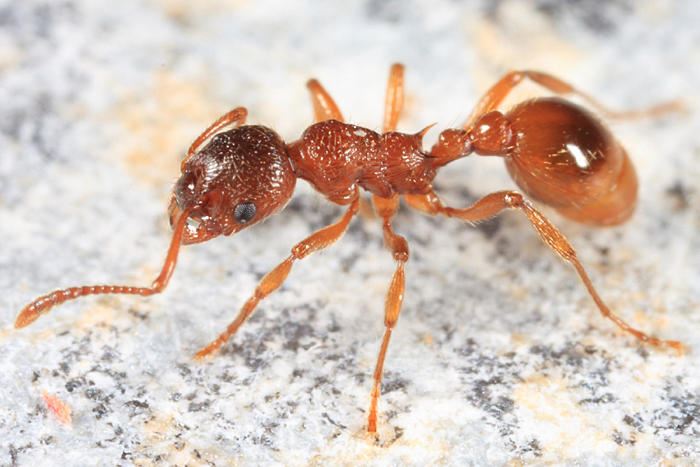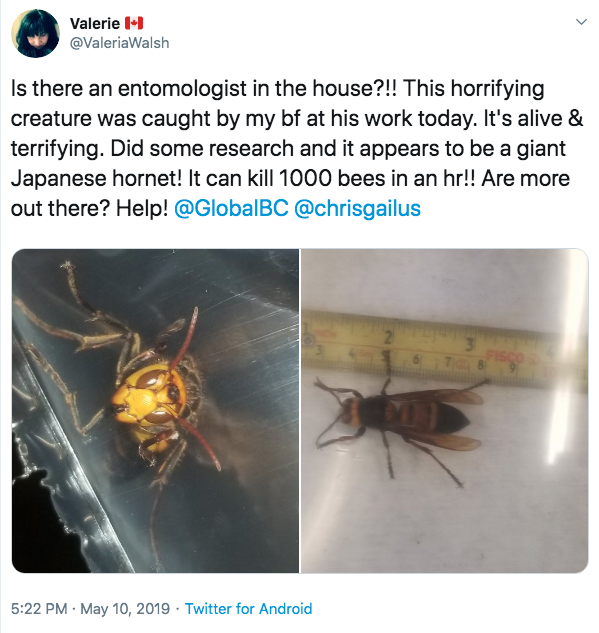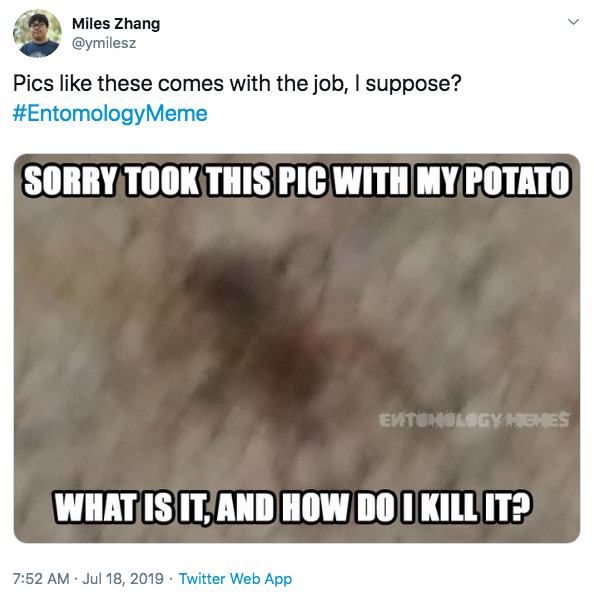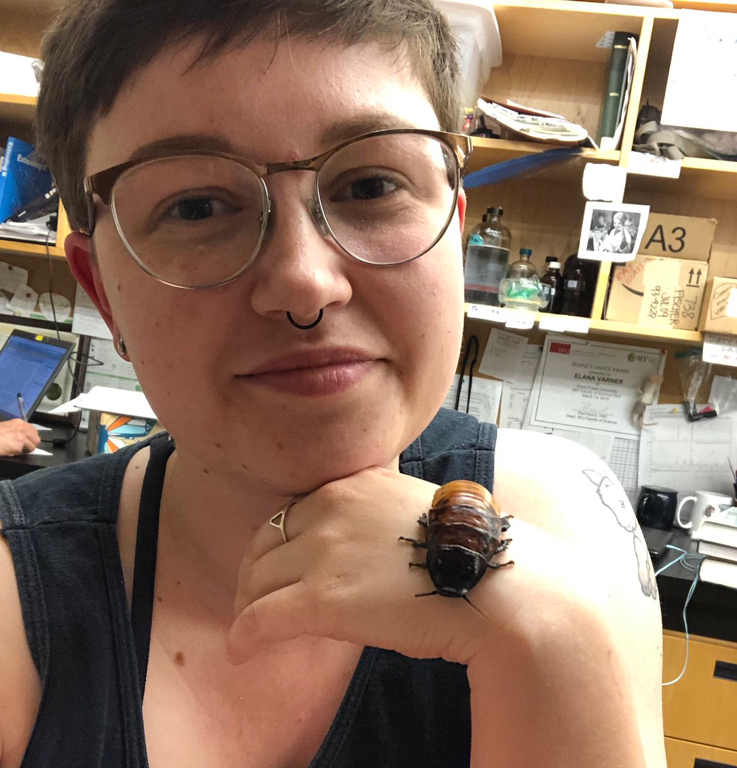The general public are afraid of my research organism. It’s hard for me to blame them, since I study a stinging fire ant. I often watch for the moment when dread fills the face of my audiences.
While some people don’t want to hear about my research at all, others are quite keen to talk about the most gruesome parts of it. How badly do the stings hurt? How often do you get stung? Is it dangerous? Could they kill someone?

Myrmica rubra, the invasive European Fire Ant. Photo by Tom Murray.
The pattern continues when I am conducting general insect outreach. When I interact with interested non-experts, lately they only want to talk about the singular giant hornet recently caught in West Vancouver.

Original tweet by Valerie Walsh (@ValeriaWalsh)
While the (one) hornet is certainly interesting, there are probably more important insect issues in Vancouver, like the Japanese beetle. The Japanese beetle is an extremely important invasive species, and several have been found in Vancouver. Regardless, I am repeatedly discussing the same topics: honey bees dying, stinging insects, and of course, that (ONE) giant hornet. Further evidence of the pattern is apparent in the “Read More” sections of this giant hornet article.
Unfortunately, fear gets attention, and the public are definitely afraid of insects and arthropods. Fear of spiders is significantly more common than fear of other arthropods, however, arachnophobes commonly also fear bees, beetles, and butterflies or moths (Gerdes 2009). So why are humans afraid of creepy crawlies? Several possibly explanations exist:
Preparedness Hypothesis
This is an intuitive explanation for biologists. It basically states that some arthropods were dangerous to our ancestors, so we evolved fear (Seligman 1971). Most insects and spiders are not actually a threat to human health (Foelix 1996). Even so, there is an asymmetry to the costs and benefits of fear- there is no harm in avoiding a harmless insect, but there is harm in approaching a dangerous one (Haselton & Buss, 2006).
Disgust Hypothesis
The disgust hypothesis suggests that the fear of spiders is transmitted culturally because they were historically associated with disease and infection (Davey 1994). Moths, beetles, flies, and cockroaches commonly infest stored food, but the disgust hypothesis was formed around arachnophobia specifically. It is possibly that a fear of spiders has remained culturally common and acceptable, leading to a cultural transmission of fear that defies logic (Gerdes 2009, Wenegrat 2001).
Unpredictability Hypothesis
Rapid, uncontrollable movements commonly produce fear (Bennett- Levy & Marteau, 1984; Schneirla, 1965). Unpredictability is associated with fear of many "creepy" animals including spiders, snakes, cockroaches and rats (Armfield 2007). This hypothesis can be applied to some arthropods for which fear is highly illogical, such as moths.
How does fear affect science communication? I asked other scientists studying “scary” organisms their thoughts on fear in sci-comm:
Andreas Fischer is a PhD student at Simon Fraser University, studying spiders:
“I do not think that spiders and teaching about spiders would be that interesting if they were regarded in a similar manner as e.g. crabs… It is the perfect icebreaker in any public outreach setting to start off with spider fear, then educate how they are actually misunderstood and then flip to the more fascinating aspect of these animals.”
(More on arachnophobia by Andreas)
Taylor Brophy (@taylor_brophy) is a recent MSc graduate from the University of Alberta, who studied slugs:
“…the disgust of slugs seems to help us get our message out. It draws support and aid pretty well as people want these pests gone. Moving forward I’m uncertain on whether our results and conclusions will fall on such interested ears”
Angela Chuang (@arachnonaut) is a PhD student at the University of Tennessee studying spider behavior:
“Everyone wants to share their crazy spider stories or express their feelings about spiders… from an optics point-of-view, I suspect many have a hard time justifying their fear of spiders to a tiny female biologist who is telling them how harmless most spiders are.”
Dr. David Shiffman (@WhySharksMatter) is a marine conservation biologist and science writer who studies sharks and other cartilaginous fishes. He has a large twitter following, and tries to change the conversation surrounding fear:
“…sarcastic mockery helps diffuse it. I post fearmongering news articles with rephrased titles like “fish seen in water” or “shark eats fish without bothering anyone””
Overall, a pattern among scientists studying “creepy” organisms emerged: it may be easier to gain public attention, but it can be difficult to communicate details.
Whatever approach you take, it is apparent that much of human fear is due to ignorance or false information. It may be the solution to fear in science communication is just… more science communication.
If scientists can take a moment to understand why the public is fearful of their research, they may have more success in educating them, and helping them overcome those fears. This may mean adding an element of patience to your science communication, even when faced with this classic entomologist scenario:

Tweet by Dr. Miles Zhang (@ymilesz)
By: Danielle Hoefelle (She/They)

I am a student in the Masters of Pest Management program at Simon Fraser University. I study the foraging and communication of an invasive pest, the European Fire Ant. My science interests include ecology, entomology, animal behavior, and animal/human interaction. My personal interests include biking, drag, feminism, weird art, and cats.
I am currently an outreach facilitator for SFU’s Science in Action, where I create and run programs for children of all ages to learn about insects. I am fascinated about the communication of science to non-experts. I am extremely curious about pseudoscience and misinformation, and how people come to believe in it. I think a lot about how to make science and scientists more approachable.
I am a queer woman in science, something which I have made a point of highlighting in my communication and outreach work. I feel strongly about making science a place where everyone feels welcome, and I think representation is an important part of that.
References
Armfield, J. M. (2007). Understanding animal fears: A comparison of the cognitive vulnerability and harm-looming models. BMC Psychiatry, 7, 68.
Davey, G. C. L. (1994). The “disgusting” spider: The role of disease and illness in the perpetuation of fear of spiders. Society & Animals, 2, 17−25.
Foelix, R. F. (1996). Metabolism. In R. F. Foelix (Ed.), Biology ofspiders (pp. 38−67). New York: Oxford University Press, Georg Thieme Verlag.
Gerdes, A. B. M., Uhl, G., & Alpers, G. W. (2009). Spiders are special: fear and disgust evoked by pictures of arthropods. Evolution and Human Behavior, 30(1), 66–73. https://doi.org/10.1016/j.evolhumbehav.2008.08.005
Seligman, M. E. P. (1971). Phobias and preparedness. Behavior Therapy, 2, 307−320.
Wenegrat, B. (2001). Theatre of disorder: Patients, doctors, and the construction ofillness. New York: Oxford University Press.
